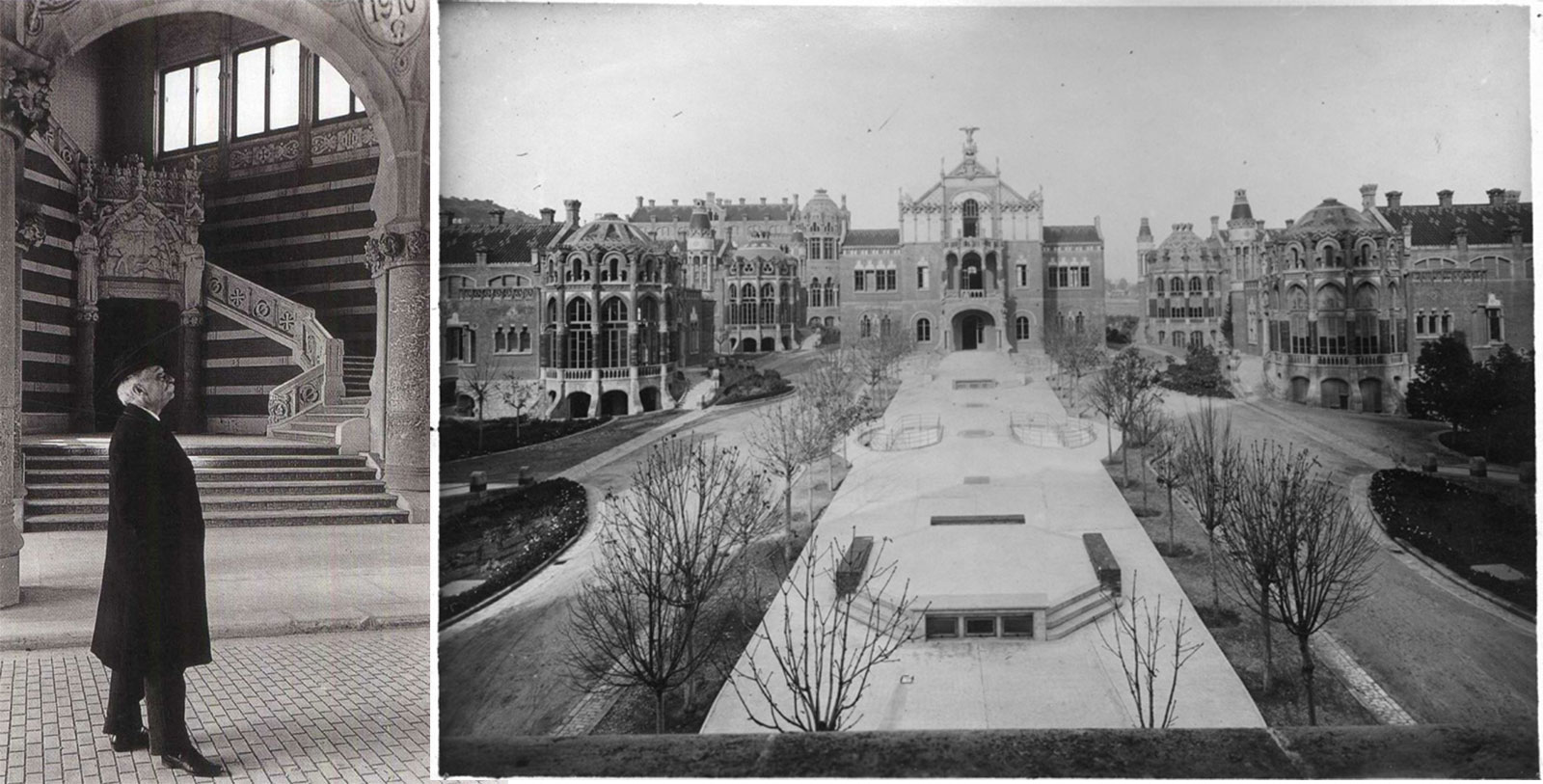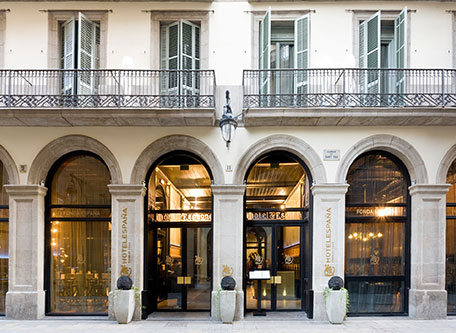Receive for Free - Discover & Explore eNewsletter monthly with advance notice of special offers, packages, and insider savings from 10% - 30% off Best Available Rates at selected hotels.
history mystery
Which historic hotel was designed by famous Barcelona architect Lluís Domènech i Montaner?
While Barcelona may be known as “The City of Gaudi,” Antoni Gaudi was not the only modernist architect to leave an impression on this Spanish city. Lluís Domènech i Montaner, renowned architect and pioneer within the Catalan Modernisme movement, created and worked on numerous architectural marvels throughout the city of Barcelona, including the historic Hotel España.
 Photographical portrait of the renowned Spanish architect, Lluís Domènech i Montaner, in 1915. |
Born in Barcelona in 1850, Domènech would spend most of his life working in Cataluña as both a practicing architect and a professor at Escola d’Arquitectura (School of Architecture). He became the Director of the School in 1900, and over his 45-year tenure he taught such notable modernist architects as Antoni Gaudí, Josep Puig i Cadafalch, and Josep Maria Jujol. He was also active in Catalan politics and wrote prolifically about both architecture and politics. In one of his most well-known articles, ‘En Busca de una Arquitectura Nacional‘ (In Search of a National Architecture), published in 1878, Domènech gave voice to the rising wave of Catalan nationalism and emphasized the importance of developing a new national architecture alongside the revival of the Catalan language and culture.
 Domènech i Montaner's article "En busca d'una arquitectura nacional" (In search of a national architecture), published 1878 in the journal La Renaixença. |
In 1888, the Barcelona Universal Exposition provided the perfect setting to showcase this national architecture. Domènech received several commissions from the Exposition’s planning committee and ultimately contributed two stunning buildings, a restaurant known as Castell dels Tres Dragons and the Hotel Internacional. The latter, having been constructed in an astonishing 53 days, was disassembled following the exposition. However, the Castell dels Tres Dragons still stands and today houses the Museum of Natural Sciences zoology collection. Domènech’s contributions, alongside those of Josep Vilaseca i Casanovas and Antoni Gaudi, served to crystallize this new national architecture as a defining feature of Modernisme.
 Left: Official poster for the 1888 Barcelona Universal Exhibition. Right: Drawing of Entrance to the Universal Exhibition of Barcelona with view of the Castell dels Tres Dragons. |
Following the exposition, Domènech was in high demand and worked on a number of projects from 1888 to 1904, most notably the Casa Lleó i Morera and the Hotel España. In 1905, Domènech began work on two buildings that have since been collectively designated as a UNESCO World Heritage Site: The Palau de la Música Catalana and the Hospital de Sant Pau.
 The Palau de la Música Catalana. |
The Palau de la Música Catalana was commissioned by the Orfeó Català symphonic choir and took three years to complete. The result was a breathtaking performance space dominated by a kaleidoscope of sculptures, chandeliers, and stained glass. An enormous central skylight transforms the space during the day, filling it with natural light that reflects off the mosaics.
 Historic photograph of the Operations House of the Hospital de Sant Pau. |
The Hospital de Sant Pau was a considerably more immense undertaking. While Domènech still included all the hallmarks of Catalan Modernisme – extravagant domes, stained glass windows, lofty masonry – he kept in mind the latest theories of hygiene, ultimately designing a massive complex of 20 pavilions. These spaces would allow for maximum sunlight and ventilation, believed to be two key factors in a patient’s recuperation. The complex served as a hospital until 2009, when it was rehabilitated into a museum and arts venue.
 Historic photograph of Hotel España circa 1905. |
Today, guests can visit these iconic landmarks and experience Domènech’s masterful techniques while staying at the Hotel España. To learn more about Lluís Domènech’s work at the Hotel España, please see the About the Architecture section of the History page.
This has been a Historic Hotels History Mystery.
For more fun facts, trivia, and historic highlights, check out our History Mystery pages for Historic Hotels of America and Historic Hotels Worldwide. Subscribe to our newsletter below and follow us on social media to play along.
Question: Which historic hotel was designed by Barcelona’s ‘other architect’? (Lluís Domènech i Montaner)



























